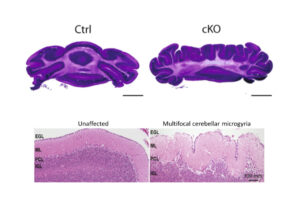Assistant Professor Jason Yi’s group applied the technique to variants of unknown significance in UBE3A, the gene that underlies Angelman syndrome.
Yi lab develops assay to solve mystery genetic variants


Assistant Professor Jason Yi’s group applied the technique to variants of unknown significance in UBE3A, the gene that underlies Angelman syndrome.

The Burkhalter lab finds that areas are embedded within a hierarchical network in which image fragments from the retina are sent through bottom-up pathways to extract percepts, and top-down pathways from higher to lower areas provide prior knowledge for interpreting the visual scene.

Paul Shaw’s lab demonstrates that sleep induction in fruit flies otherwise unable to perform learning and memory tasks rescues their behavioral performance.

Monosov lab demonstrates that neurons in the zona incerta are responsible for the motivation to seek novelty.

The researchers find that loss of the CHD7 protein in mice lead to changes in gene regulation and abnormal brain folds, indicating possible mechanisms for the rare neurodevelopmental disorder.

Researchers including James Fitzpatrick and Michael Rau of WUCCI and the Department of Neuroscience describe the structure and function of a heme transport and assembly machine called CcsBA.

Research from Valeria Cavalli’s lab shows that targeting support cells with a cholesterol drug could improve recovery after spinal cord injury.

In a new paper, Valeria Cavalli’s lab describes the key role of a relatively poorly studied type of glial cells, satellite glial cells (SGC), in nerve repair.

The Bagnall lab finds the complexity of tuning in a vestibular neuron arises from the diversity of inputs it receives, and that this complexity can be predicted from these inputs.

A study from Adam Kepecs’s lab in mice and people offers a new approach to investigating mental illnesses.